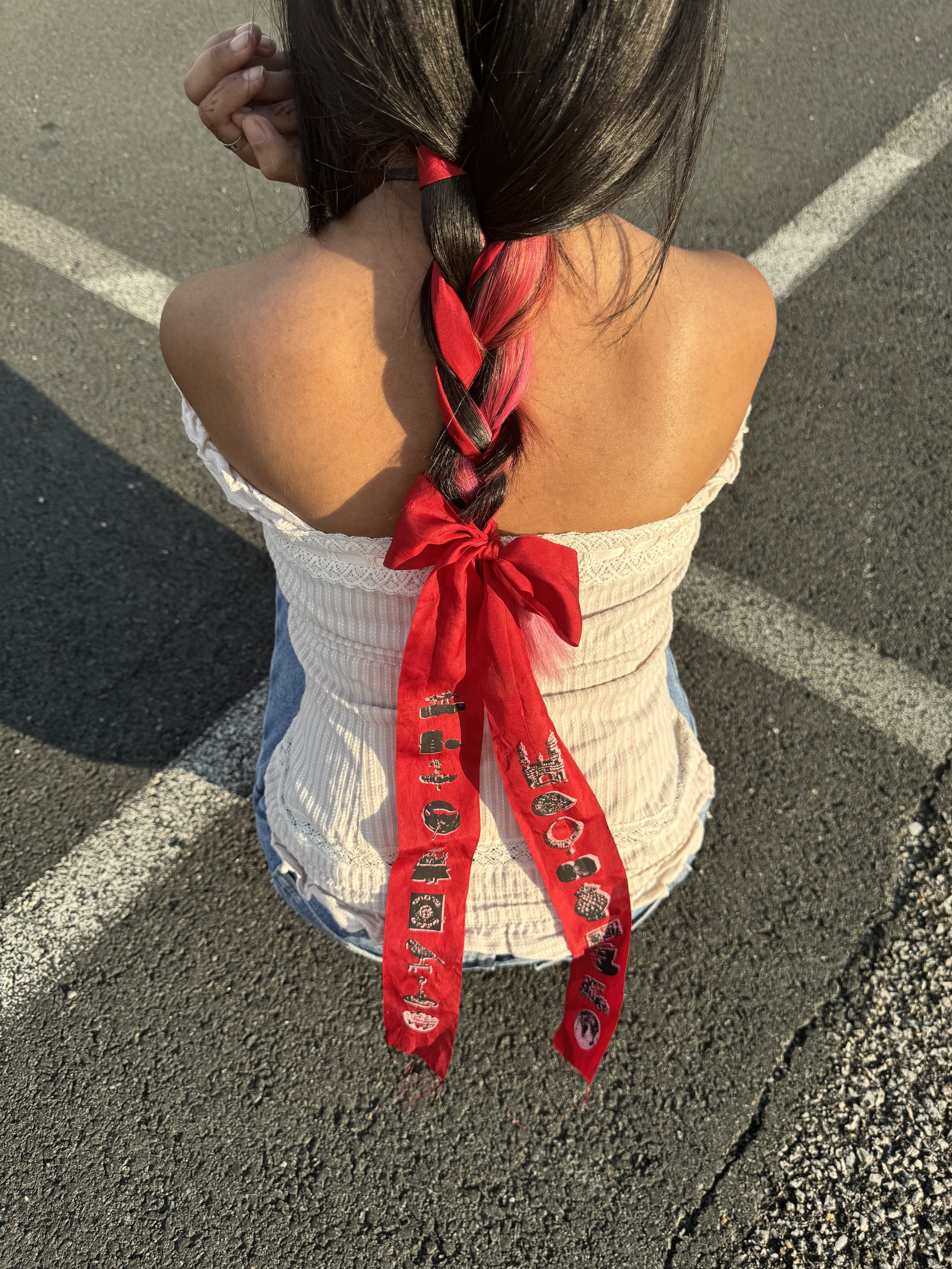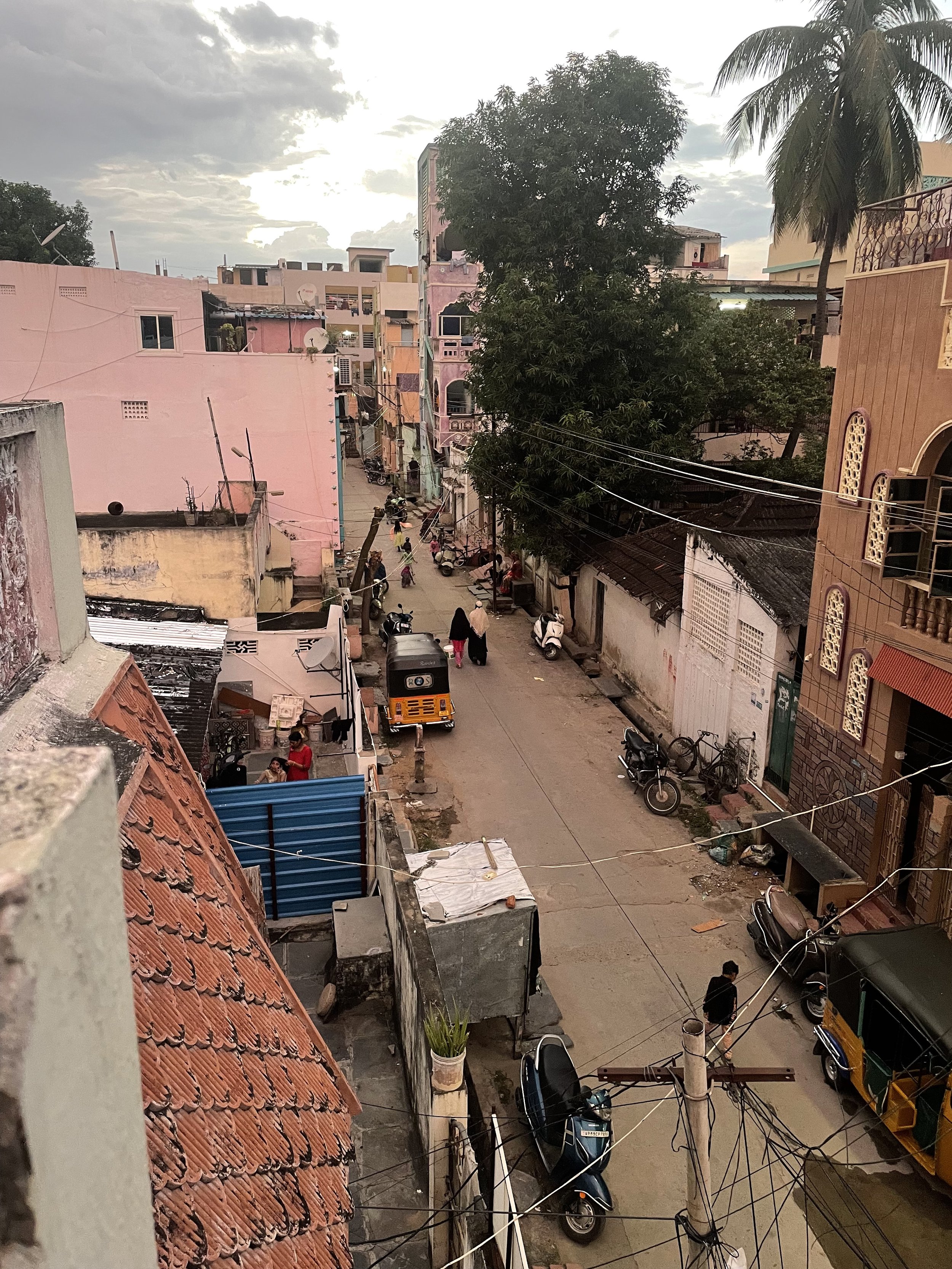Mornings before school
There were many differences in my upbringing and my cousins’ in India. One of which was school uniforms. Despite going to public school in America and having the freedom to wear Bobby Frank and a messy bun I envied my cousin’s uniforms. I loved their peter pan collars and mary jane shoes but it was their ribbons that I wanted to wear the most. Every morning before school my grandmother would braid ribbons in my cousins’ hair. Sometimes the ribbons were white, or black, or my personal favorite was red. When I visited during summer break my cousins were usually in the middle of a monsoon school semester. After they got ready and we had breakfast together, they set off on their walk to school. I’d run up to the terrace and watch them go. Our street was long, and our home was tall, all I could really see was their ribbons. Even from a distance, the red ones were visible.
I wanted this project to blend what I’ve learned about my hometowns, Hyderabad and Guntur, and how I view my childhood experiences as an adult today. I visited a museum in Hyderabad the last time I was in India, called The Nizam Museum also known as Purani Haveli. The artifacts were so rich and beautiful, I had to memorialize them in some way. I designed a .png file of the artifacts to be printed onto a ribbon for my hair.
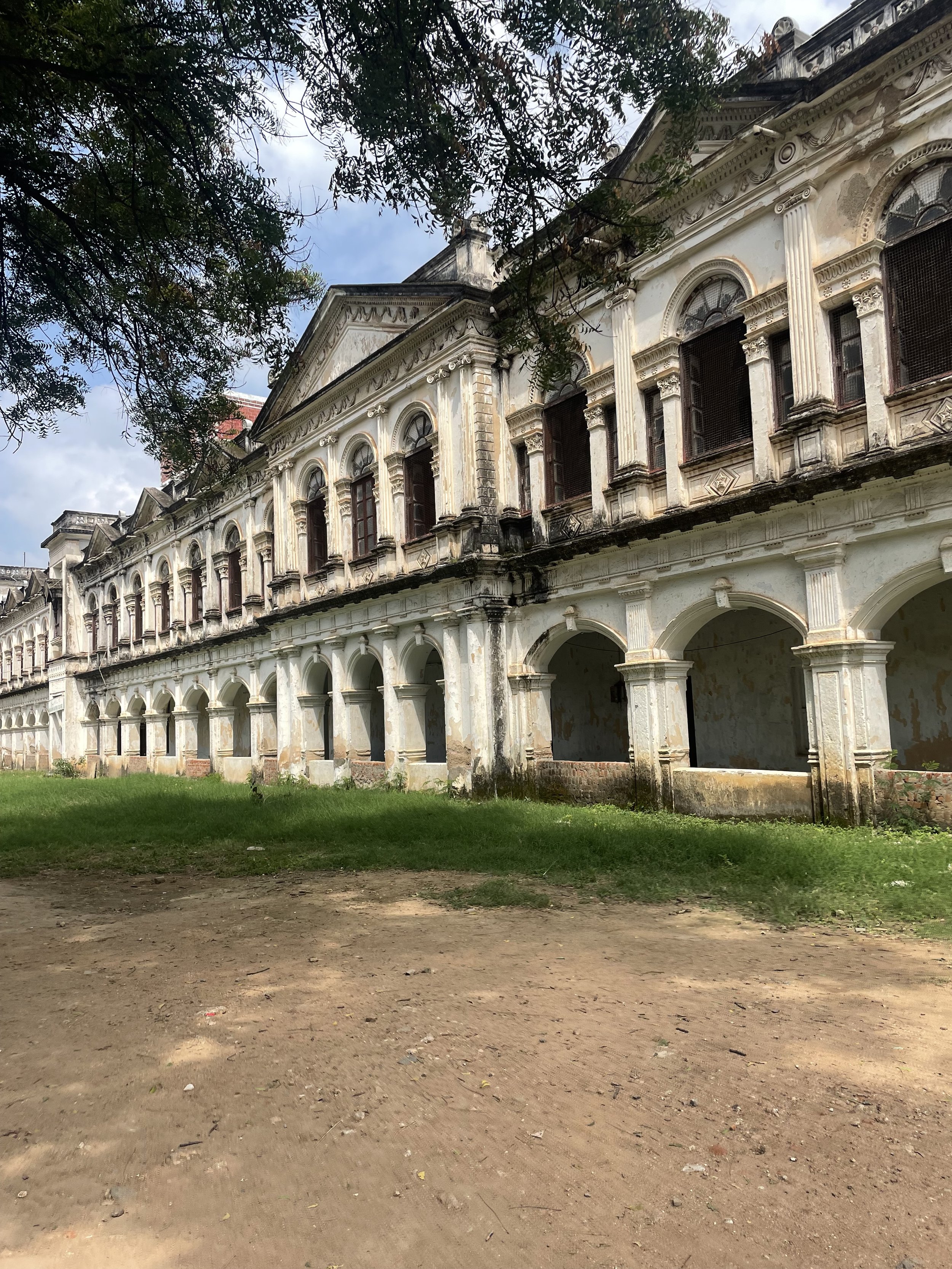

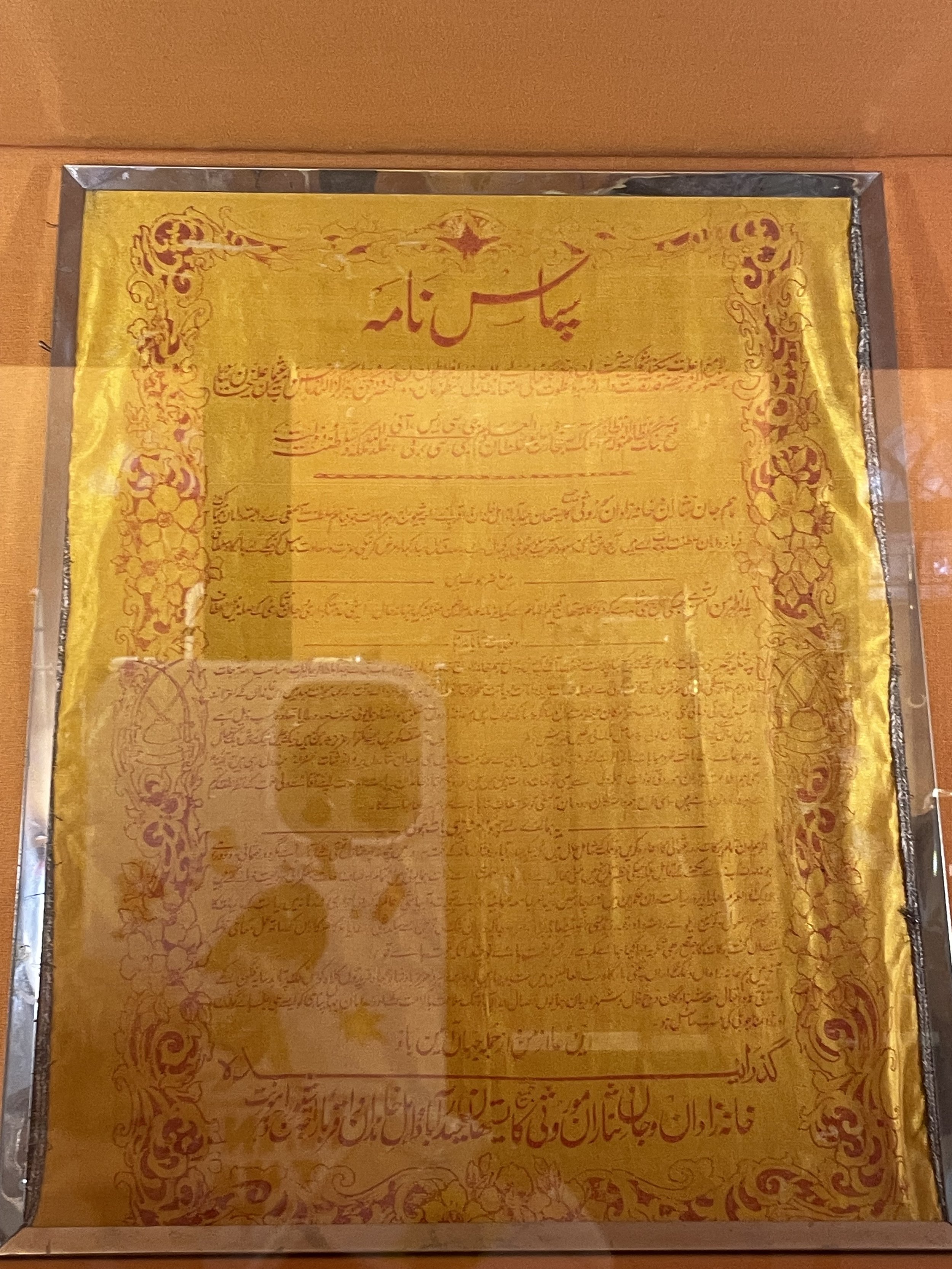


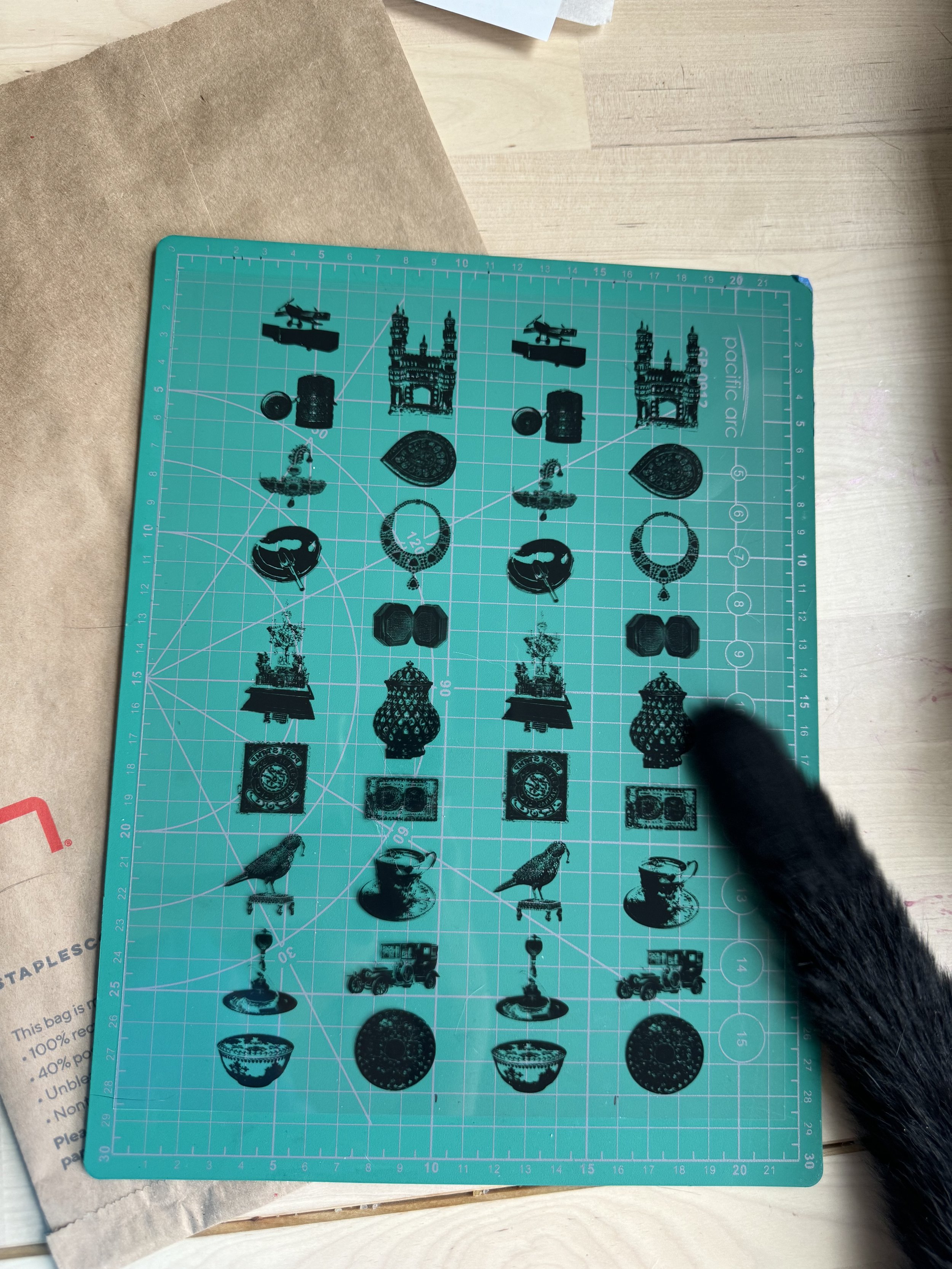
Failing forward
Originally, I had planned to make printed ribbons as a beetroot anthotype. An anthotype is an image created using photosensitive material from plants under the influence of light. Unfortunately, I ran into many complications. Aside from limited space to dye and dry long ribbons, not having my own outdoor space meant I had to lay my set up out to dry on my building’s public rooftop. In the past I left some ceramics to dry and they were stolen, so you can imagine my hesitation. The weather was also unpredictable, it was that time of year of scattered summer storms. Beetroot anthotypes also take up to five weeks to develop. After a couple of failed attempts, it was time to move onto another means of production, screen printing!
Ruined anthotype ribbons after a storm
Screenprinting
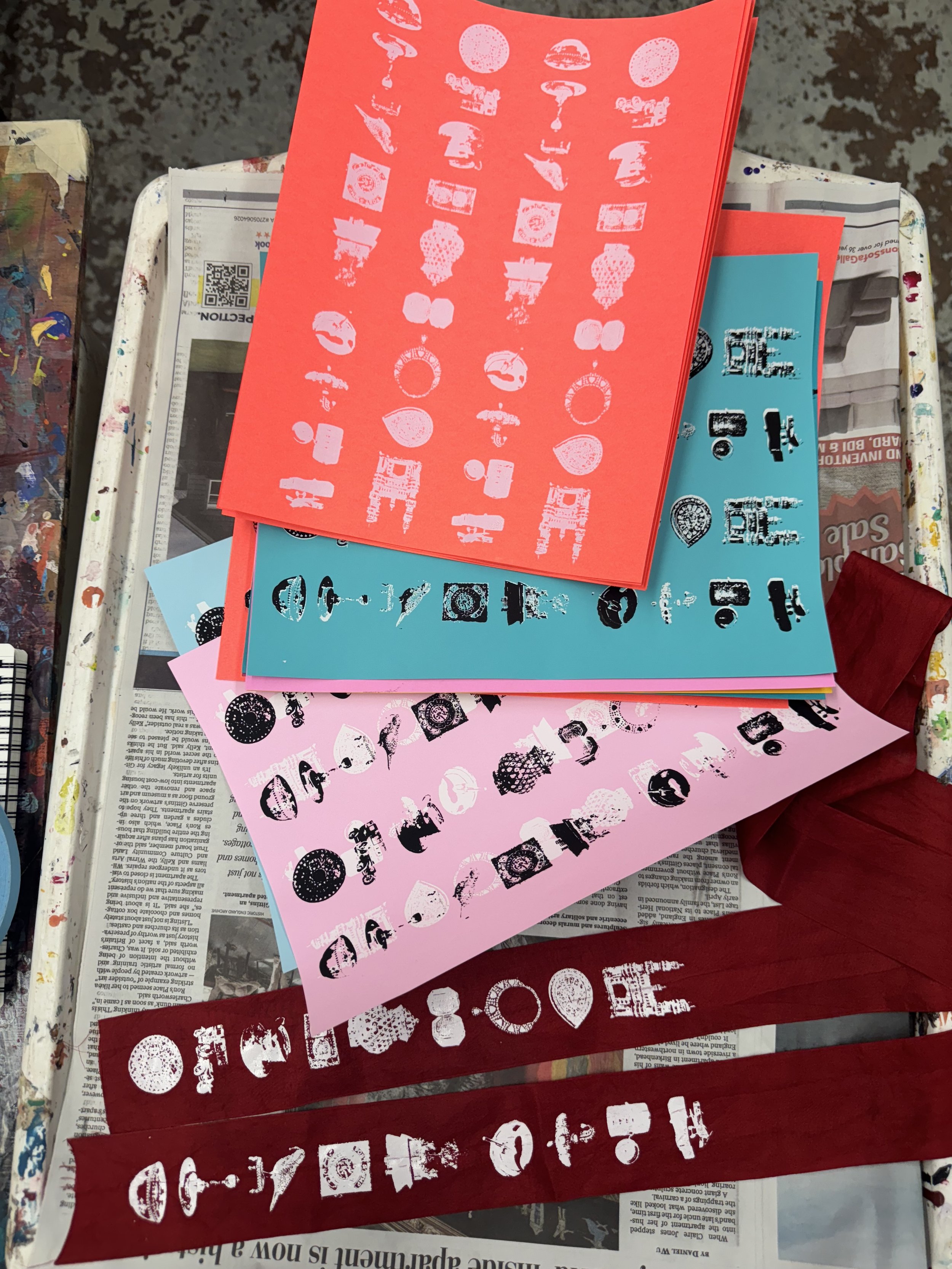
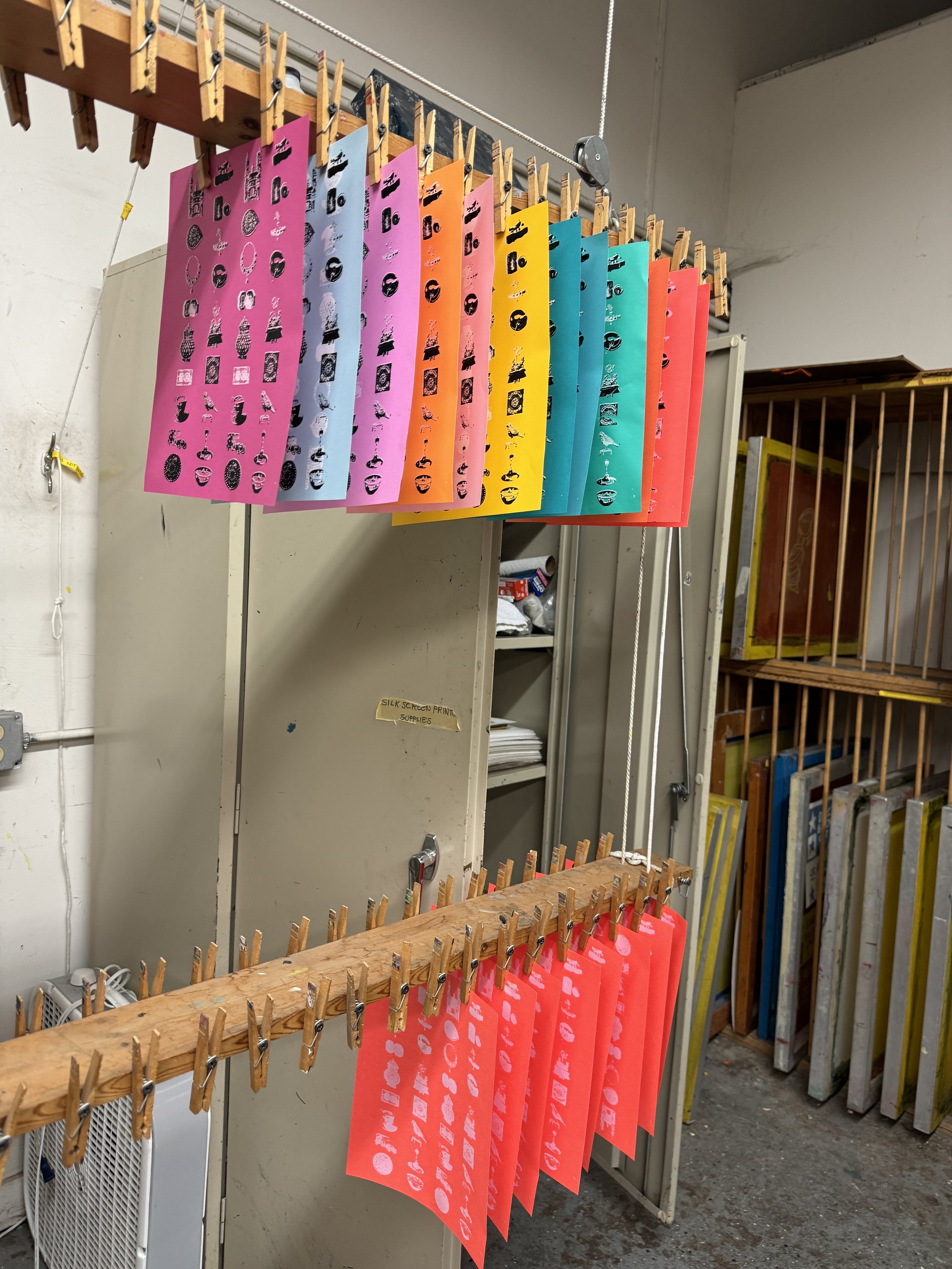
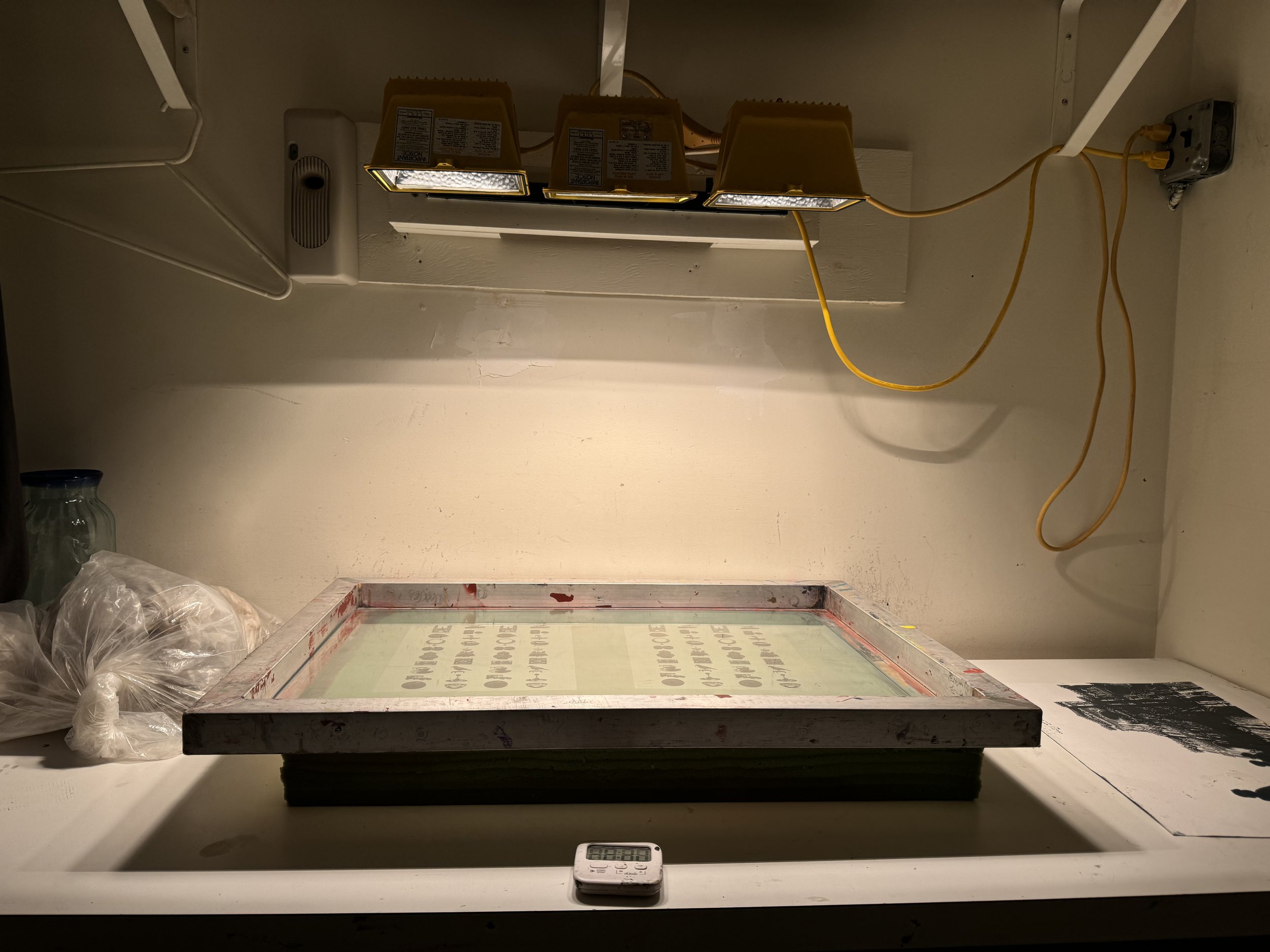
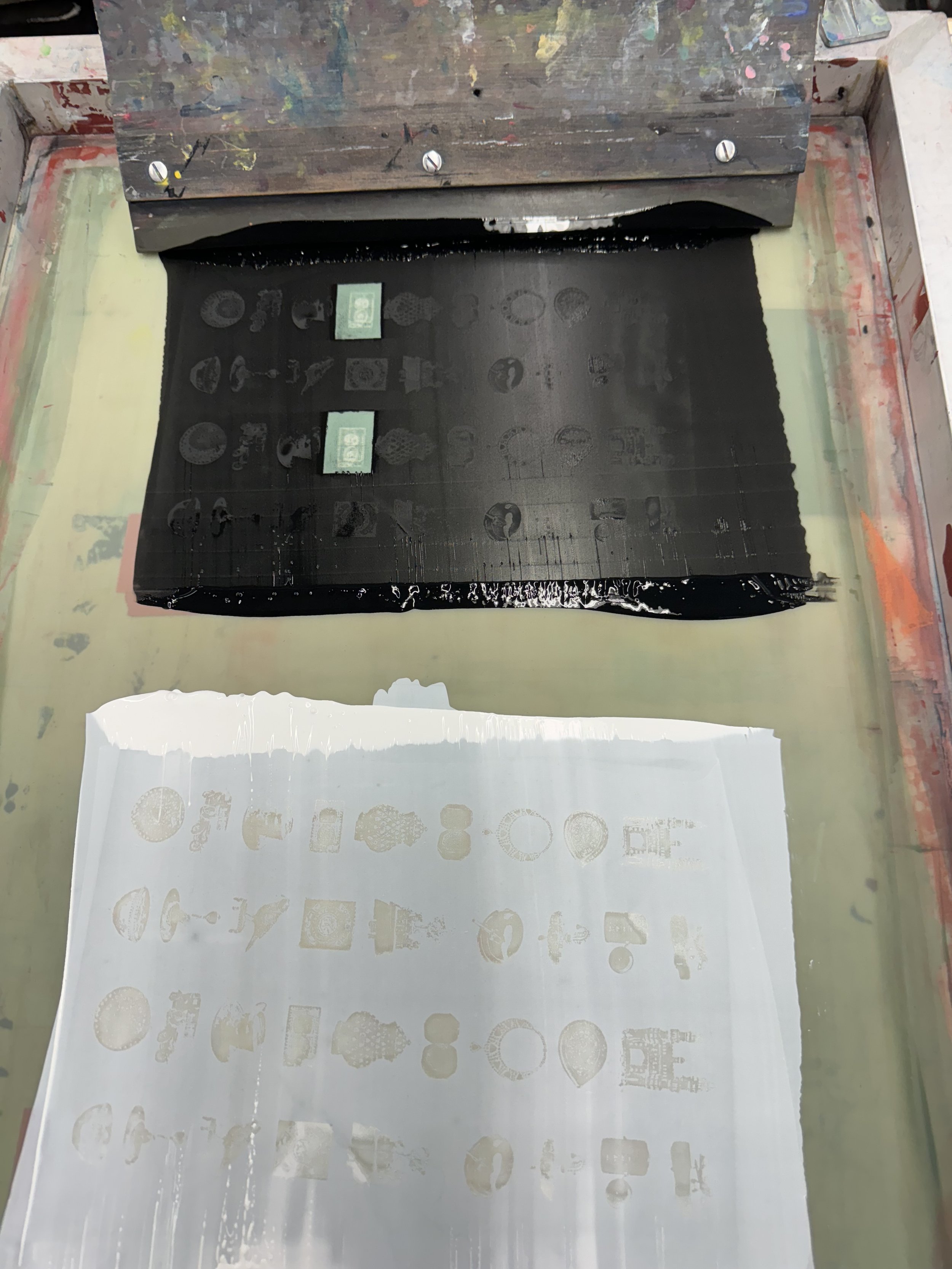
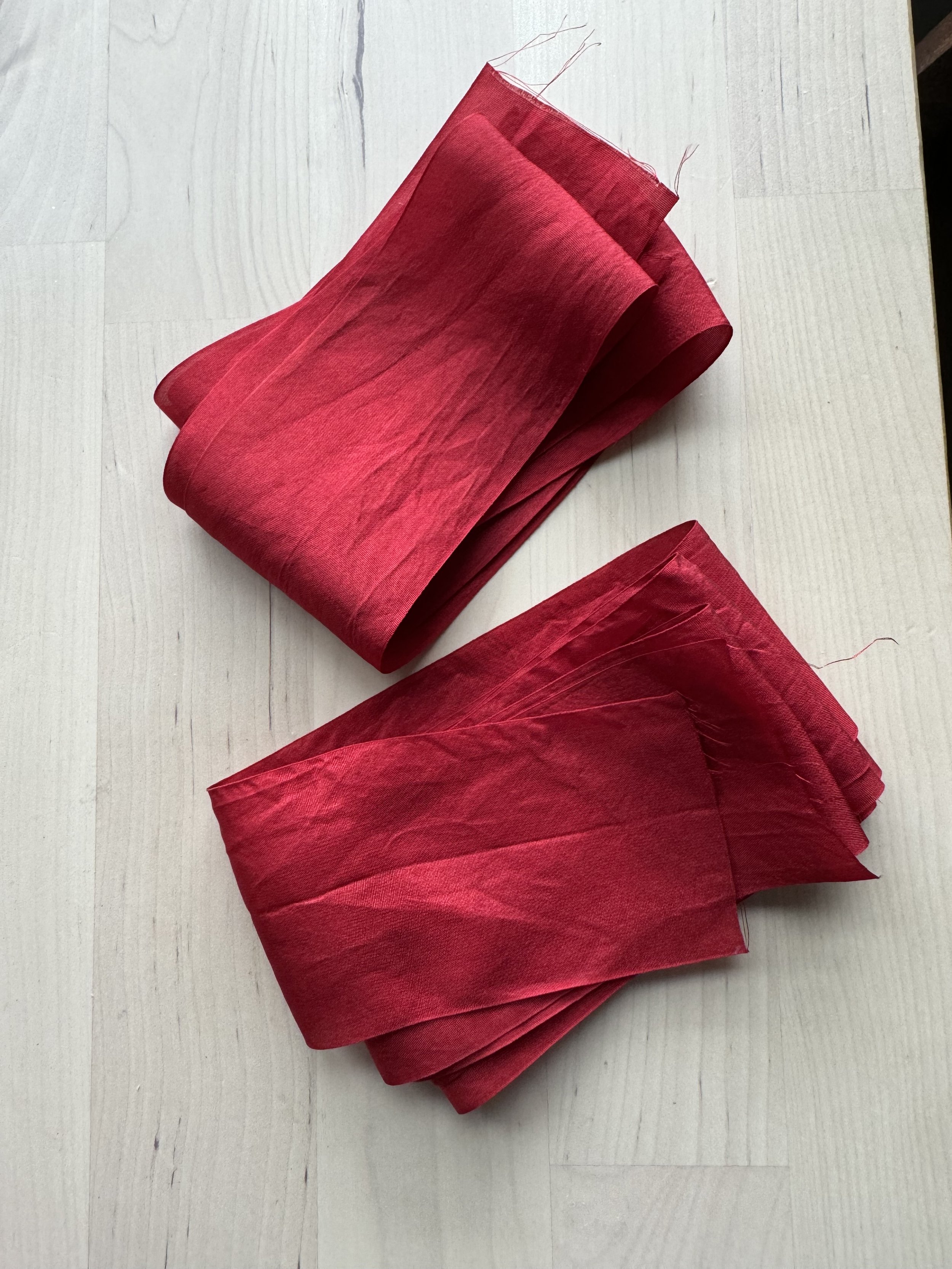
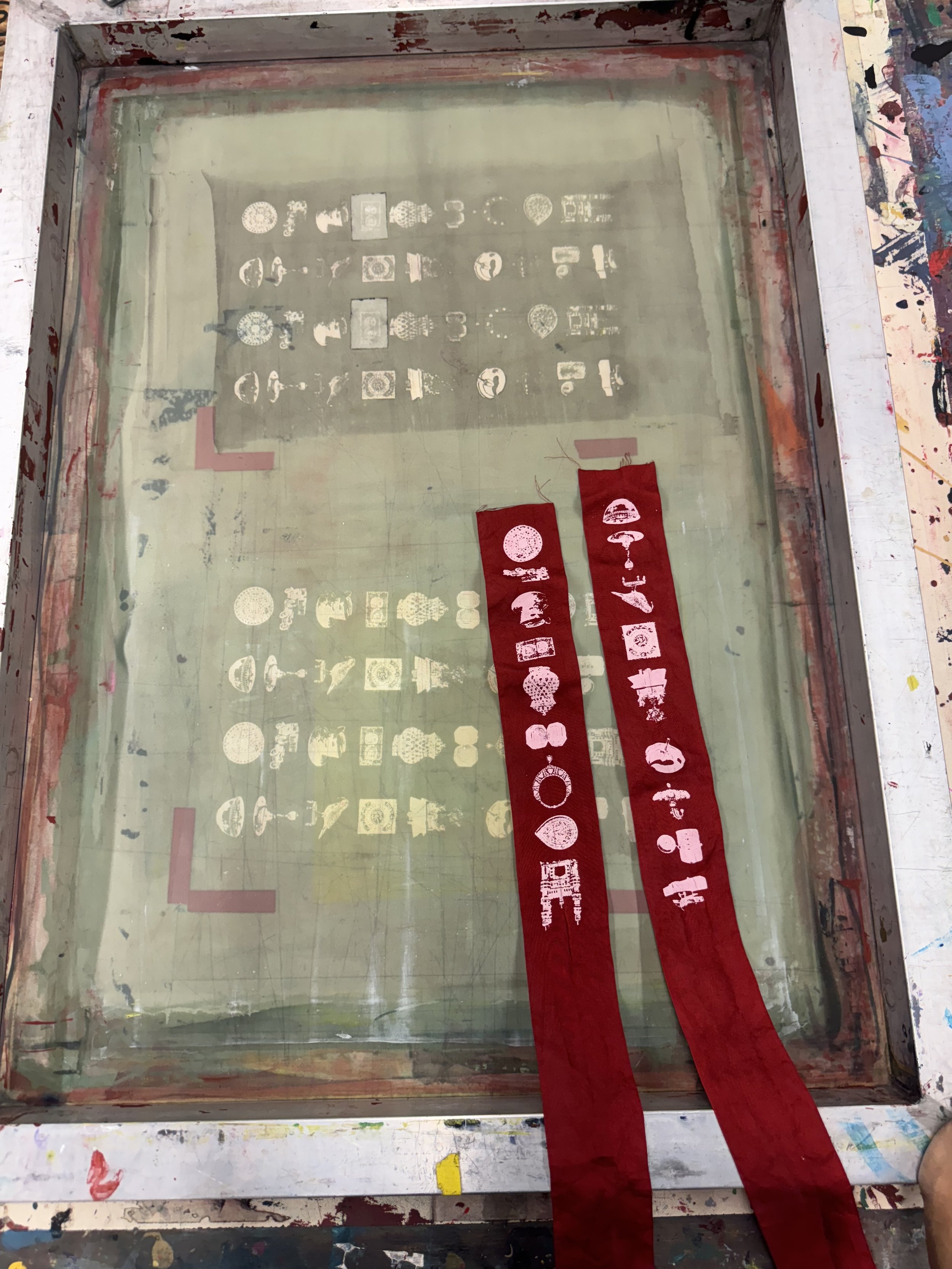
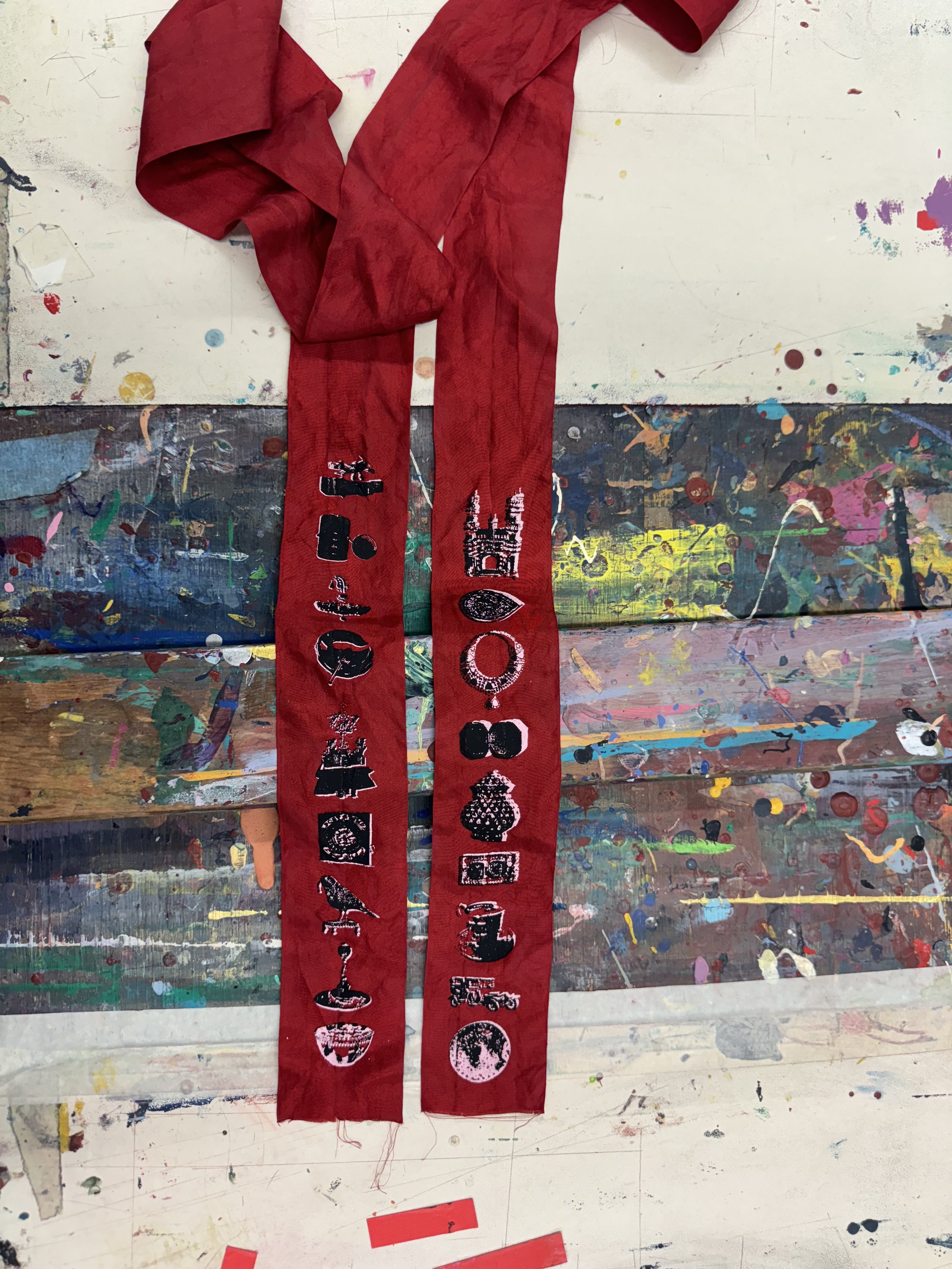
Screenprinting was a truly satisfying solution, I was able to add more depth to the design and complete it in a fraction of time! I dyed ribbons a similar shade to what I remembered my cousin’s wearing. A beautiful bright deep red. Note to self: air dye ribbons or deep clean the dryer afterwards because you will stain the inside and ruin your towels in your next wash. In preparation for printing, I burned a screen with two transparency copies of the design. This allowed me to print a white layer of paint and black layer of paint without having to wash the paint off between layers and waste studio time. With my remaining time I also created prints! I used vibrant cardstock to replicate the signage of auto rikshaws. When it rained and my cousins were unable to walk to school or be dropped off by a parent, they caught an auto on the busy streets by themselves to school.
To reference the ribbons in the prints I added another layer with red paint on the Indian Rupee. Although my cousins and I all went to public school, it was mandatory to pay for school in India. Education was a privilege until the Right of Children to Free and Compulsory Education Act was passed in India in 2009. The law accounted for free and compulsory education provided as a fundamental right to children between the ages of 6 to 14. I wonder what it would’ve meant for the older generations in my family if this law was passed even 50 years ago. I was almost 10 by the time education became a right in India.
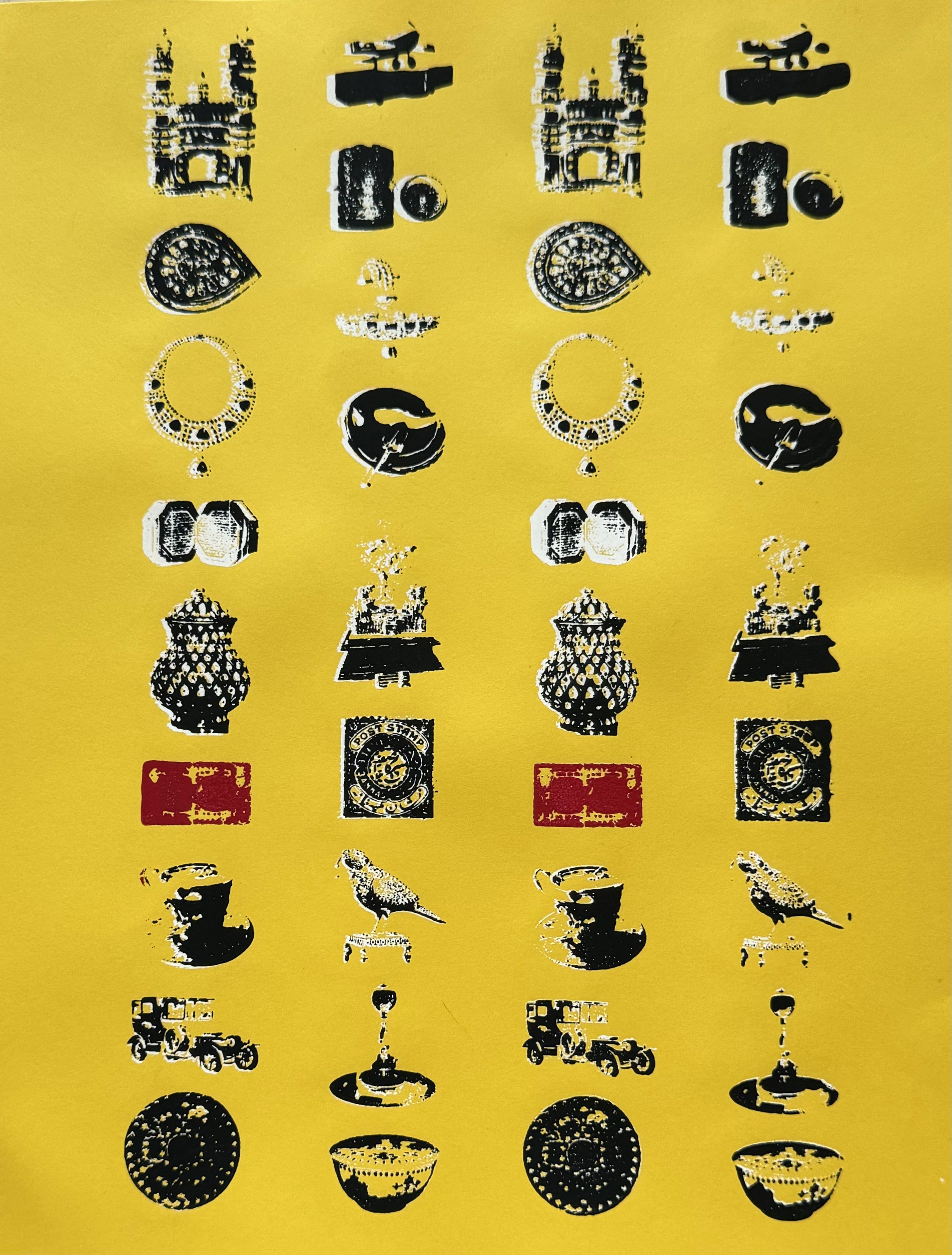
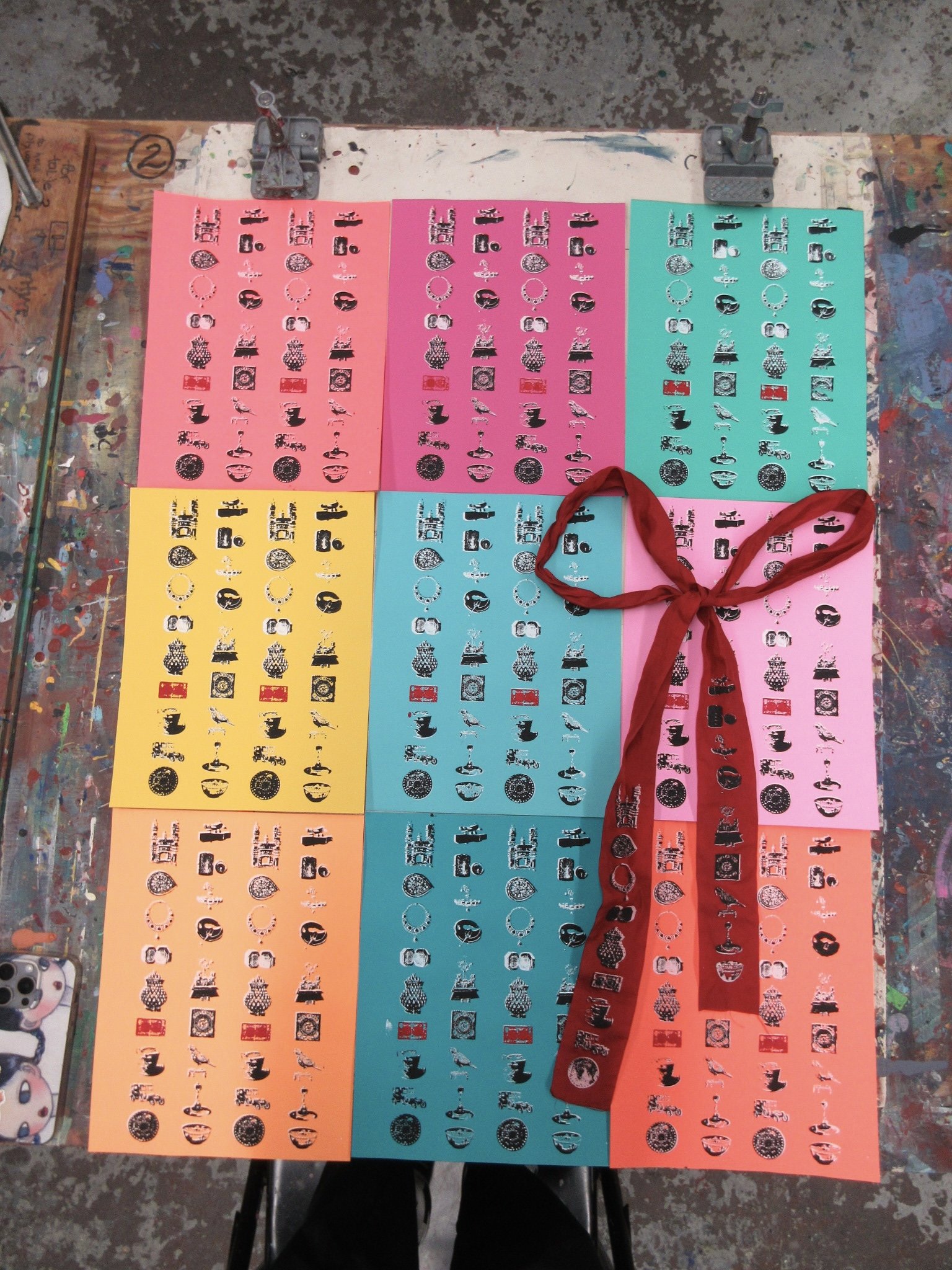
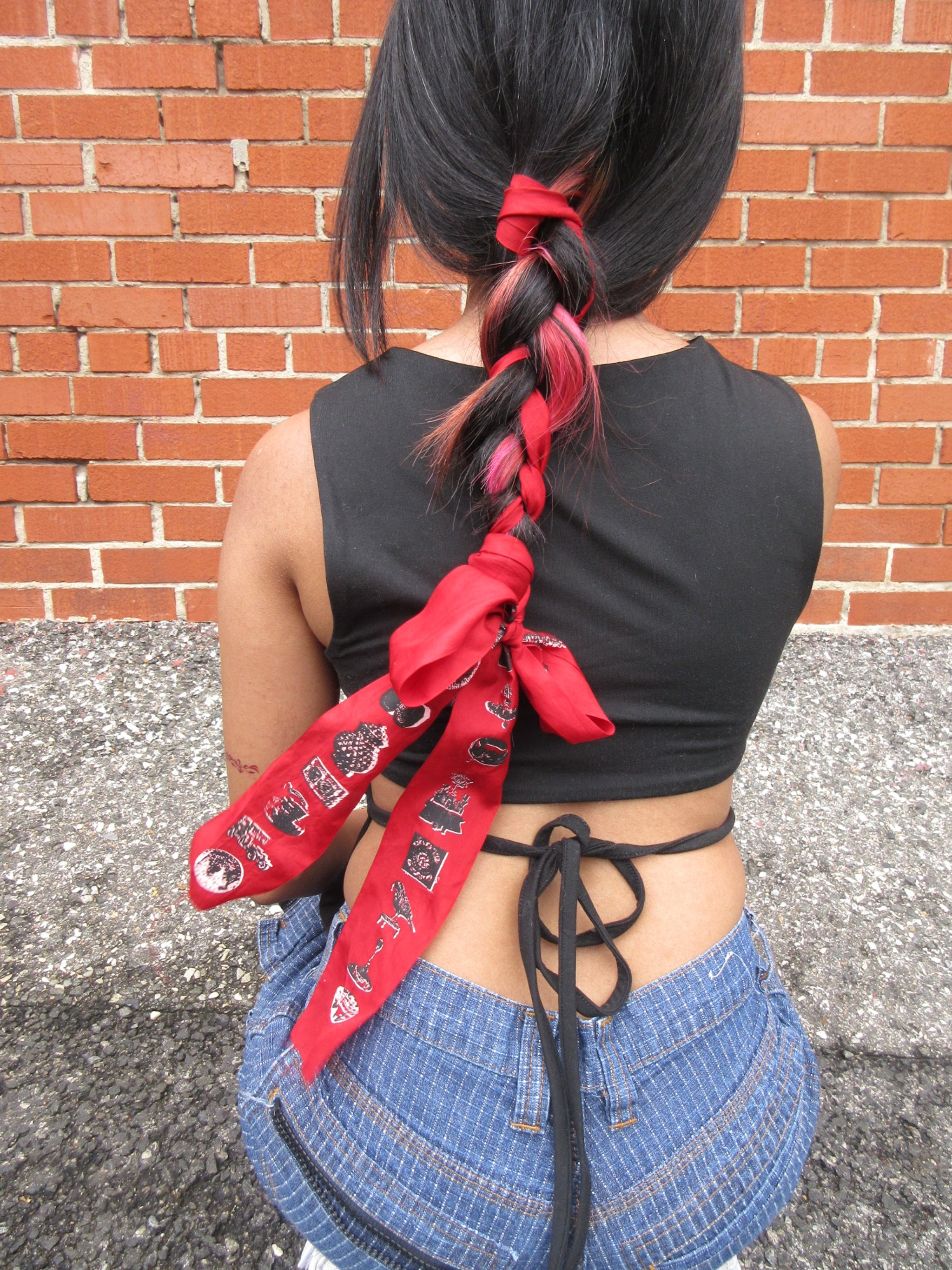
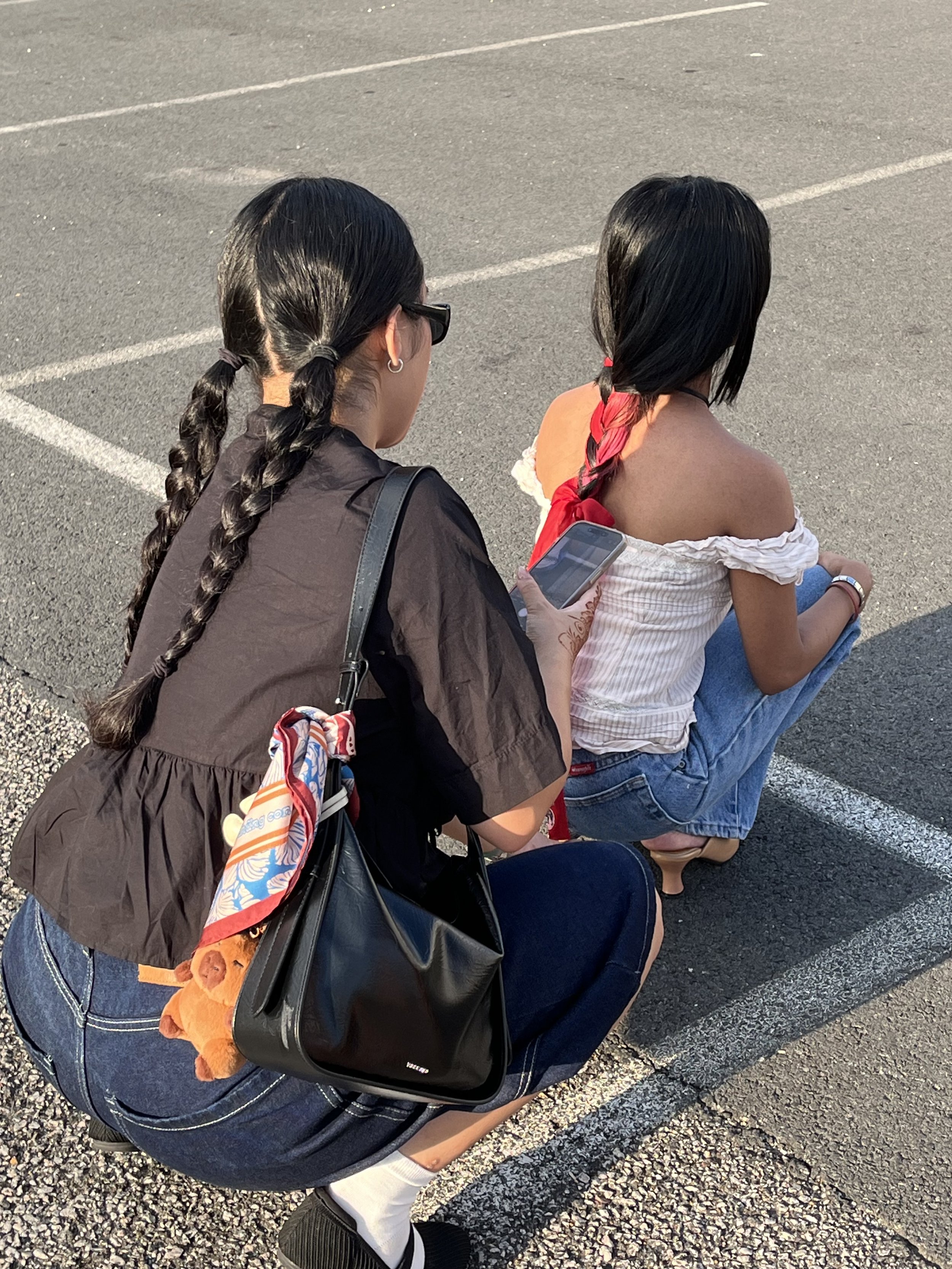
*Special thank you to my girlfriends for helping me braid my hair and take pictures :)


